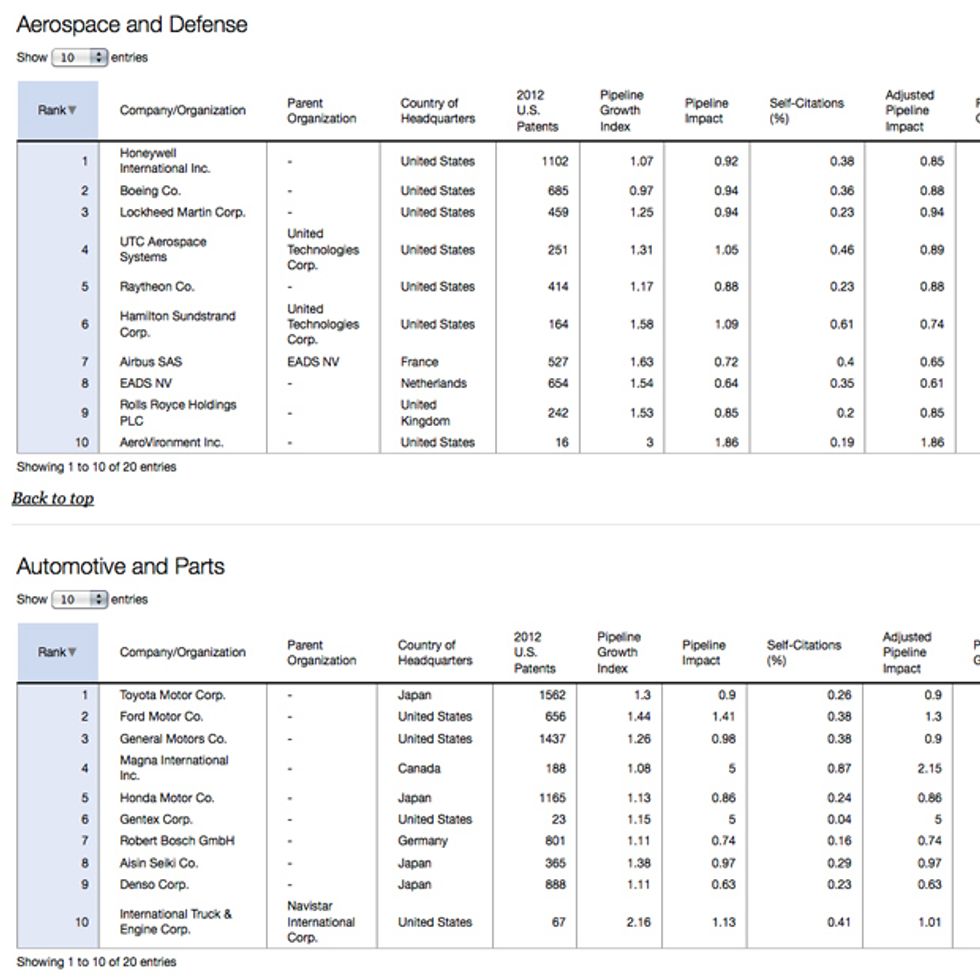Patent Power 2013
With high-quality portfolios, newcomers are making waves

Consumer-facing companies continue to rise against the conglomerates of the past, as household names keep being added to the Patent Power Scorecards. Over the years, we have charted the rise in the patent prowess of Google (No. 1 this year in Communication/Internet Services) and Apple (regaining the top spot this year in Electronics). Facebook takes its bow this year, debuting at No. 2 in the Communication/Internet Services scorecard. This is particularly impressive given Facebook's relatively small patent output—just 46 U.S. patents granted in 2012, versus over a thousand for both Google and Research in Motion (now BlackBerry)—and it reflects the high impact and general applicability of its patents.
The Patent Power Scorecards are based on quantitative benchmarking of the patent portfolios of more than 5000 leading commercial enterprises, academic institutions, nonprofit organizations, and government agencies worldwide. This benchmarking—carried out by us at 1790 Analytics, based in Haddonfield, N.J.—takes into account not only the size of organizations' patent portfolios but also the quality of those portfolios, as reflected in characteristics such as growth, impact, originality, and general applicability. This enables smaller but higher quality portfolios such as Facebook's to fare well against much larger portfolios. (See “Constructing the Patent Power Scorecards" for an explanation of our methodology and an explanation of the table headings.)
And Facebook is far from the only newcomer using quality to punch above its portfolio's weight. Within the same Communication/Internet Services category, there's SeeReal Technologies (developer of holographic and 3-D display technology) at No. 5 and Cleversafe (provider of dispersed storage solutions) at No. 7. Looking at other scorecards shows DigitalOptics Corp. debuting at No. 1 in Semiconductor Manufacturing. This subsidiary of Tessera Technologies develops imaging systems for smartphones. Other interesting newcomers this year include Validity Sensors (No. 10 in Computer Peripherals and Storage) with its fingerprint sensor technology, VoiceBox Technologies (No. 13 in Computer Software) with its conversational speech recognition software, and Crestron Electronics (No. 6 in Computer Systems) with its home automation systems.
Moving beyond the electrotechnology space, the Biotechnology and Pharmaceuticals scorecard has a number of interesting new names, including Vertex Pharmaceuticals (developer of cystic fibrosis and hepatitis C treatments) at No. 3; Enanta Pharmaceuticals (also a developer of hepatitis C treatments) at No. 4; and Isis Pharmaceuticals (developer of antisense RNA-based drugs) at No. 8.
Finally, there's a noteworthy move in the Universities/Education/Training scorecard. Last year saw a Chinese university qualify for the scorecards for the first time, namely Tsinghua University at No. 15. This year, Tsinghua has continued to strengthen its patent portfolio, and it is ranked third in this year's Universities/Education/Training scorecard, behind only the Massachusetts Institute of Technology and the University of California.
